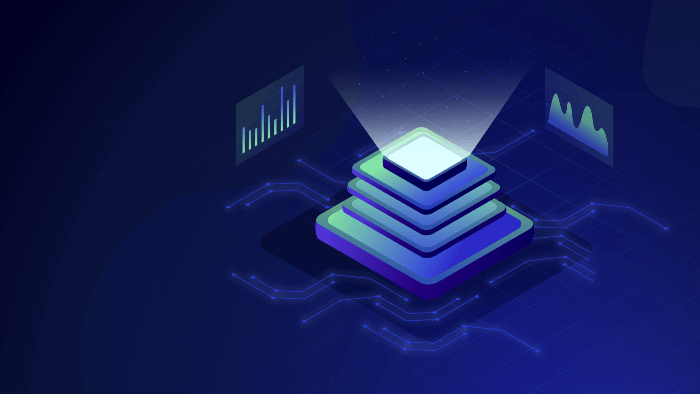An explanation of DeFi staking and a detailed guide to this passive income

The topics of decentralized finance, various types of crypto assets and the development of new technologies have been on everyone's lips for a long time. However, it turns out that many people do not understand DeFi staking. We want to walk you through the process of generating passive income through DeFi staking incentives and explain how DeFi staking operates.
What does DeFi staking mean?
Initially, lending and lending platforms paved the way for the development of DeFi staking platforms. They promoted the cryptocurrency industry and provided the first examples of decentralised finance. To qualitatively treat this relatively new financial concept, we need to break the term down into its main components.
What is DeFi?
First, we need to find out what the Decentralized Finance (DeFi) sector is. A DeFi Development system consists of specialized applications (DApps) and financial services such as blockchain-based DeFi platforms. A blockchain is a list of information-containing blocks that are arranged sequentially.
The core idea of DeFi was to develop an independent and transparent financial ecosystem that is not influenced by any regulator or the human factor. In simple terms, because of DeFi, finance is available to the public: many existing blockchain-based platforms allow users to transact with each other without intermediaries like banks.
What is Staking?
By staking, we mean making passive profits simply by storing crypto assets. The Proof of Stake (PoS) algorithm is used here. It works as proof of ownership and is one of the most reliable methods to protect the blockchain from interference. Participation is considered a transaction authorization process.
All you need to do is invest in cryptocurrencies and receive high returns, which tend to be much safer and easier than, say, trading.
DeFi Staking: What is it?
Now that you are familiar with the terms, we will move on to the definition of DeFi staking. Through smart contracts, it offers the chance to stake bitcoin assets and DeFi token development. Users lock cryptocurrency in a wallet for staking and will receive a certain reward in return. The rewards differ from currency to currency; it depends on how valuable your share is to the liquidity mechanisms of DeFi staking platforms.
DeFi staking is more accessible than traditional investment and staking opportunities as it is easier to use. In addition, it generates attractive passive income even with a small initial investment.
The mechanics of DeFi staking
Any Proof-of-Stake (PoS) blockchain network or DeFi staking platform is based on validators, who are eligible to receive staking rewards because they create and validate blocks. DeFi staking benefits both individual users and external stakeholders like organisations. They could be accredited through a loan protocol or a participation group.
The DeFi staking system is designed to accurately and competently monitor transaction execution. As mentioned, staking involves locking up a certain number of crypto assets to become a validator. The following principle applies here: the more the user stores, the more blocks the system can generate.
What are the types of DeFi staking?
Thanks to the development of DeFi, liquidity investors can easily earn interest on their assets at stake. Since they are investing money that has been locked up for a while, it would be nice for them to see it grow.
The system will thank you for your participation with a percentage of the deposit. To stake your assets in the most profitable way, there are several DeFi solutions.
Staking
As already mentioned, staking is the locking of a certain number of assets using the proof-of-stake algorithm. Here, the system is based on validators. After the end of the participation period, the user receives a reward from the system, which can be considered as passive earnings.
Yield Agriculture
DeFi Development services provide customers the chance to practise yield farming. In this case, it increases both the risks and the profitability. The expected return on such pairs, declared by the DeFi staking platform, often exceeds 100% per year. Only half of the deposit will be denominated in stable coins, and the other half is denominated in a highly volatile cryptocurrency.
Liquidity mining
A form of yield farming called liquidity mining makes advantage of liquidity pools. These pools are crucial because they allow the DeFi sector to function according to its basic concept: trading without intermediaries.
Your deposit is divided between the assets of the trading pair and you will earn returns on both.
What is a liquidity fund?
While staking, a user can lock coins or tokens into a liquidity pool, which is a pool of cryptocurrencies locked in a smart contract. Liquidity pools provide support for DeFi staking platforms by guaranteeing a pool of funds for decentralized trading, lending, and other functions.
Another key element is the liquidity providers, since they make available the assets in the liquidity pool. This mechanism is used for Cardano, Tezos, Solana, Algorand and other cryptocurrencies.
A typical liquidity pool consists of two assets (typically token and token or token and stablecoin), which create a particular trading pair. The group dynamically adjusts asset prices, taking into account any changes in their values. Unlike centralized staking platforms with limit orders, there is no need to place an order in liquidity pools and wait for its execution.